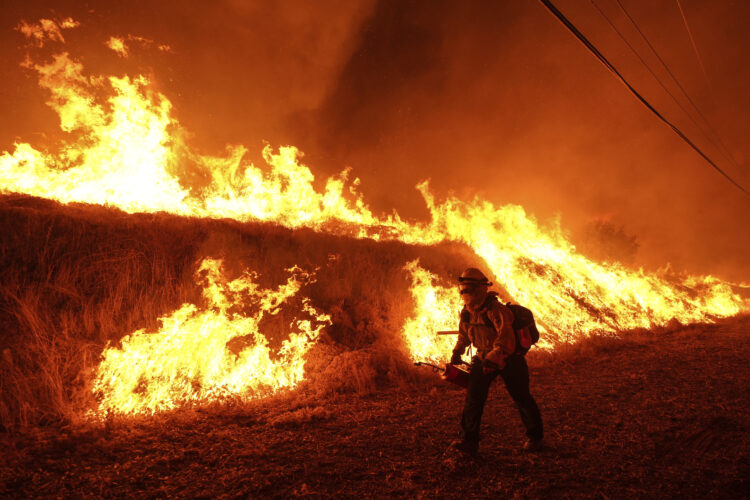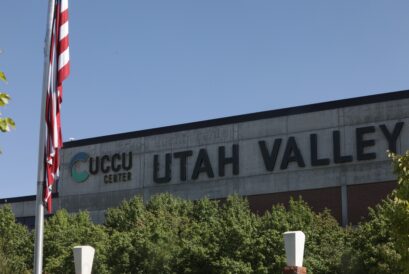Guest opinion: Can we save the forest?

Jae C. Hong, Associated Press
A firefighter carries a drip torch as he ignites a backfire against the Hughes Fire burning along a hillside in Castaic, Calif., Jan. 22, 2025.Here we go again. Another government agency made the decision to let the forest burn, during the hottest and driest part of the year “to see what would happen.” This time the fire on the North Rim of the Grand Canyon took the historic lodge plus around 80 other structures.
We see this same result over and over again throughout the United States. In Utah, a few summers ago, the BLM (“Burn The Land Management”) neglected to stop a small fire south of Birdseye in the middle of the Summer. Again, they wanted to see what would happen. The result was a wildfire that consumed thousands of acres of land and forced residents to evacuate their homes.
Governmental agencies seem to have only two solutions for overgrown forests. They either set fires, labeled as “controlled (but generally uncontrolled) burns”; or they neglect to put out fires when they start to “see what will happen.” As if they don’t know.
I grew up in Klamath Falls, Oregon, a lumber town surrounded by forests. As a teenager, I saw a huge area of Douglas Fir trees that was destroyed by an unmanaged fire. Although the government tried to replant the area, there are very few trees that survived. It has not recovered in my lifetime, and I doubt that it will in my grandchildren’s lifetime. Why so few trees? New saplings which are not watered, or shaded by other trees, wither and die. To this day, it makes me almost cry to drive through that devastated area.
Governmental agencies have spent millions trying to thin the forests of brush and trees next to highways to stop fires caused by motorists. It is hoped that if a fire starts, it won’t consume everything, but instead sweep through the undergrowth and forest debris, without burning the trees above. I’ve seen the results of this practice. Most of the time the fires take all the trees — the result of a misguided forest management practice.
A later experience suggests a possible approach to managing, and still maintaining, our forests. My parents owned a cabin in a dense forest in Northern California at Medicine Lake near the Lava Beds National Monument. The summer after my freshmen year at BYU, I drove to nearby Bullseye lake. I was stunned to find the area torn up by a logging company which had removed the old growth trees and left smaller trees, as well as large piles of slash to be burned when it snowed. I was angry and asked my Dad who I should write to protest. (I never did send a letter)
Ten years passed before I made another trip to Bullseye with my husband and children. To my surprise and utter delight, the forest around the lake was absolutely beautiful. The small trees had matured, the underbrush had grown back, and the best part was that the resurrection of the forest didn’t cost the taxpayers anything.
So, why not let the lumber companies employ workers to thin and remove diseased trees, clear the forest, and then sell hundreds of board feet of lumber that they have rescued? Opposition voices will quickly make a lot of false claims, such as destruction of spotted owl habitat (they are not endangered), or that the lumber industry should not profit from the forests. Lawsuits making such claims have practically killed the lumber industry in the northwest United States. My hometown, Klamath Falls, once had 13 lumber mills. Now it has only two. Currently 30% of the lumber used in the United States is imported from Canada. No wonder the price of building homes is so high.
We need to stop demonizing lumber companies, let them do their jobs, and save our forests from misguided governmental management. I know the National Park Service, BLM and Forest Service have good people, but they need to find other tools to manage the forests other than to let them burn. I love our forests and feel that it is an absolute tragedy when they burn. Burning down a forest for any reason makes no sense. It is aesthetically disturbing, poor management, bad economics, and just plain wrong. Taxpayers should not have to pay for it. At the rate the forests are being destroyed, it is urgent that we do everything we can to save them now.
MayAnn Andrus lives in Provo.


